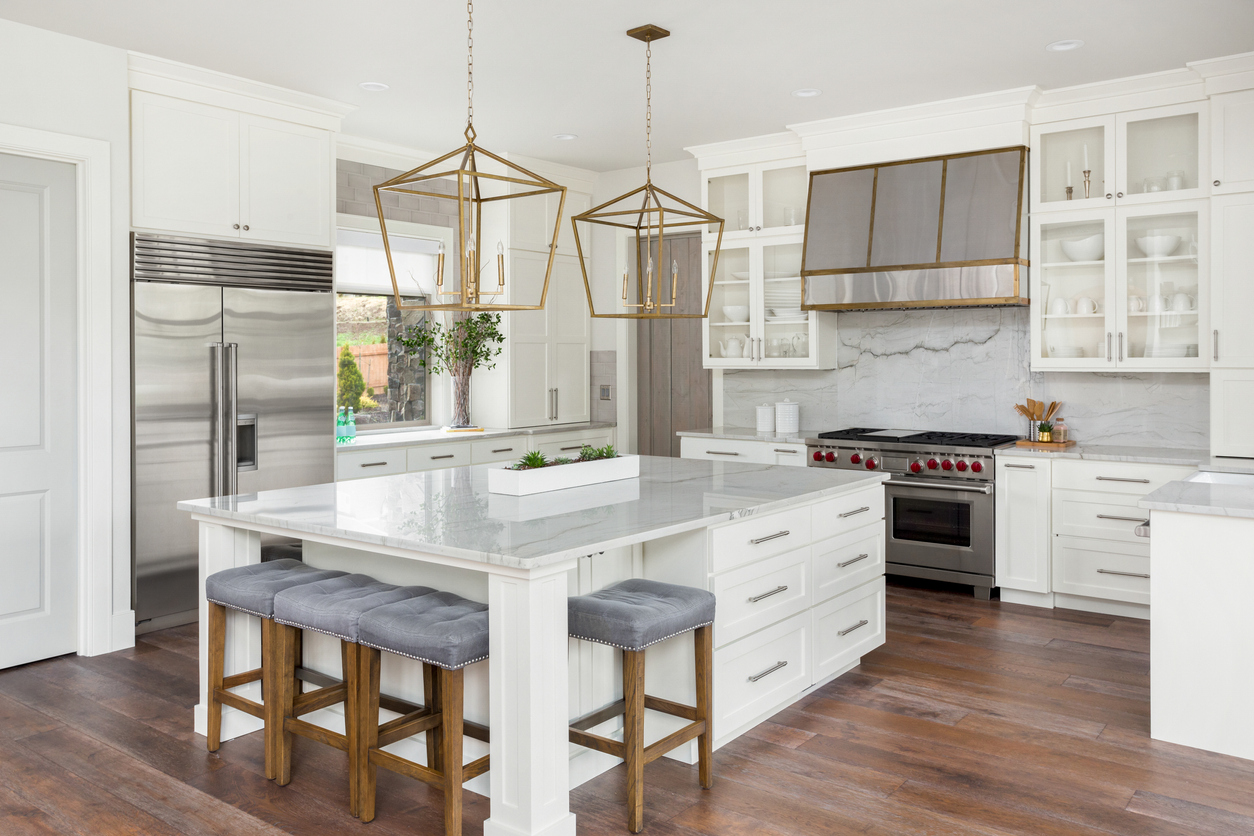As someone who is in the middle of upgrading our kitchen with a new refrigerator in 2021, I thought I would share some useful tips learned along the way, to make your own refrigerator purchase a bit easier.
The refrigerator is one of the cornerstone appliances in the typical American kitchen. But, beyond the basic fact that you need a fridge, the options, features, and configurations can get a bit complicated.
Fridge Types
Built-Ins
These are typically the most expensive and also least common refrigerators you’ll run across. You may not even find them in a lot of stores, but if you find your way to a high end appliance retailer, you’ll likely run into a few examples. These units are effectively built right into your kitchen cabinets. They can be made to blend in entirely, with custom front panels that match your cabinets or still stand out in stainless steel or some other surface, but they tend to be flush with your cabinet doors, making them the most seamless to integrate into your kitchen. They also tend to be taller than the average fridge, (over 80″ in many cases), largely because a lot of the mechanics are kept either above or below the useable fridge storage space. This fully integrated design comes at a price, with these units reaching well over $10,000. Between the product cost, and the very specific installation requirements (typically a much larger space than for a typical freestanding fridge) these tend to only be found in high-end, custom kitchens. But, they can be show-stoppers as a way to elevate your kitchen design.
Freestanding
These are the refrigerators most of us are more used to. They are designed to slid into a space in your cabinets or at the end of a kitchen counter and come in a range of somewhat standard sizes, to make replacing them in existing spaces fairly straightforward. However, there are still many, many variations to consider and still a wide range of prices. One key element is the door/compartment configuration. These typically come in three general configurations.
- Top Freezer – where the freezer box is at the top and the fridge below, normally with a large door for each.
- Bottom Freezer – Just the opposite of the Top Freezer, but with the possible added wrinkle where the bottom door is actually a pull out drawer, rather than a typical hinged door.
- Side-by-Side – where one side of the unit is the freezer (often slightly narrower) and the other is the fridge, with opposing hinged doors.
- French Door Refrigerator – where the fridge is on top, with french doors and the freezer is at the bottom, normally on a pull out drawer.
There are variations on each of these, especially the French Door Refrigerator, where additional pull-out drawers are sometimes included for snacks or the freezer is actually two separate compartments with french doors (like the top), but where one compartment can be selected as either a freezer or fridge, based on the temperature setting.
Additional Considerations
Once you get a handle on the main style of fridge you want you still have a lot of other options.
- Full Size or Counter-Depth – A quick tip here that Counter-Depth doesn’t actually mean that the fridge won’t stick out past the counter, just that it is typically shallower than a Full Size fridge (which can often stick out a lot)
- In-Door Water/Ice Dispenser – outside or inside the door
- Automatic Ice Maker – sometimes more than one
- All kinds of interior features and configurations
One quick pro tip, since I have run into this issue myself: make sure to take into consideration how the doors on your fridge will open. Will the door hit an island or other set of cabinets across from it? Do the doors open significantly wider than the width of the unit itself? If so, you may not want it next to a wall and it may need to stick out from the countertop and other cabinets in order to fully open.
